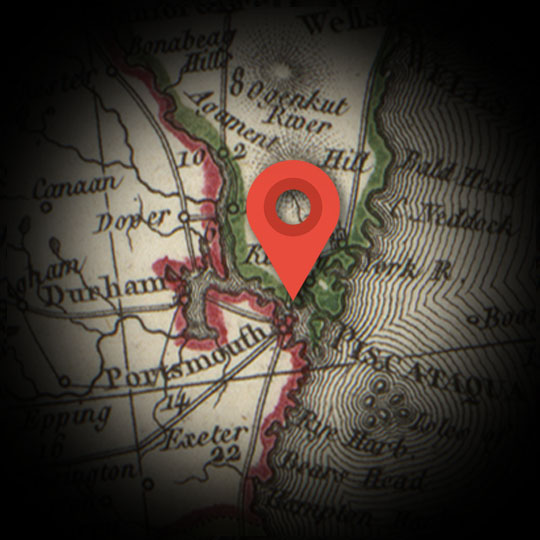PORTSMOUTH
Explore
Alexander Hamilton’s sole, brief foray into the Granite State took place on June 21, 1800.
At this point in his personal mission to New England (see Oxford for background), Hamilton was stepping up the pace, branching out to as many worthwhile destinations as he could while more or less temporarily based in Boston.
Records of Hamilton’s activities in the city of Portsmouth, New Hampshire, are sparse. But it’s generally known that he traveled there to meet and network with fellow Federalists. Given what we know about Hamilton’s designs on Rhode Island Governor Arthur Fenner (see Providence), it’s possible to surmise what his specific aims in New Hampshire were.
Under Article II of the U.S. Constitution, in presidential elections every state is allotted a number of voting delegates to the Electoral College. And it is these individuals who ultimately cast the for-the-record votes or president.
In modern America, a more direct and causal relationship between everyday voters and members of state Electoral College bodies has evolved. But in Hamilton’s time, presidential electors were understood to have much more discretion. In some states, everyday voters were not enabled to vote for president at all.
New Hampshire in 1800 was one such state. Its Electoral College voters were chosen only by members of the state legislature.
Therefore, if Hamilton could track down likely Federalist electors and could persuade them to vote for South Carolinian Charles Cotesworth Pinckney over incumbent president John Adams, Hamilton stood an outsized chance to sway the election in the whole state. (Hamilton didn’t, however, get much traction on his Portsmouth errand. In the election, all seven New Hampshire Electoral College voters sided for John Adams.
Hamilton was still a controversial figure in 1800, detested by members of Thomas Jefferson’s Democratic-Republicans. Hamilton’s trip to Portsmouth was notable for dueling accounts appearing in partisan newspapers, some claiming that Hamilton was warmly received by allies in Portsmouth, with opposition papers gleefully exclaiming that he was utterly ignored and looked the fool.
On top of this predictable abuse in the press, Hamilton’s journey around New England also sparked plenty of intra-party animus. Pro-Adams Federalists were enraged at Hamilton’s electioneering, and wrote about him being a “Jacobin” and part of a pro-British “Essex Junto.”
The city of Portsmouth, New Hampshire, was settled by Europeans for its advantageous harbor and its immediate access to rich forests and timber and teeming stocks of fish and seafood offshore. Its original English settlers named it “Strawberry Banke” because of the profusion of wild strawberries they encountered upon disembarking.
Portsmouth became a merchant and shipbuilding hub both before and during the Revolution, when its distance from theaters of active warfare gave its shipbuilders enough protection to contribute three ships to the patriots’ side Continental Navy. It was the 12th largest American city according to the 1790 U.S. census, which explains why Hamilton made it his business to put in face-time there.
Also worthy of note is an early, often overlooked development in the American Revolution that took place in Portsmouth. On December 14, 1774 (many months before the famous clashes at Lexington and Concord, Massachusetts), local pro-separatist raiders led by John Langdon assaulted the British Fort William and Mary, absconding with scores of barrels of gunpowder and artillery and long arms weapons that would later be used at the Battle of Bunker Hill.
A plaque at the site today records this as “the first victory of the American Revolution.”

TIME FRAME:
June 21, 1800
